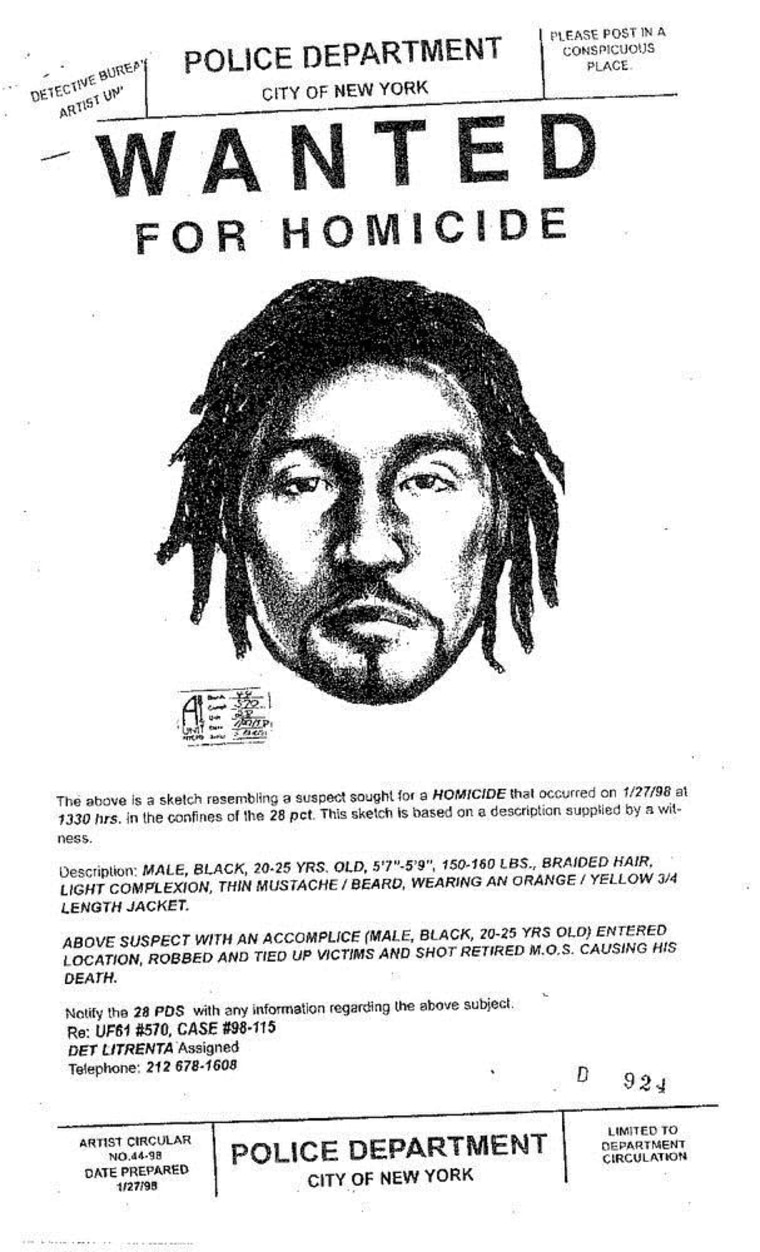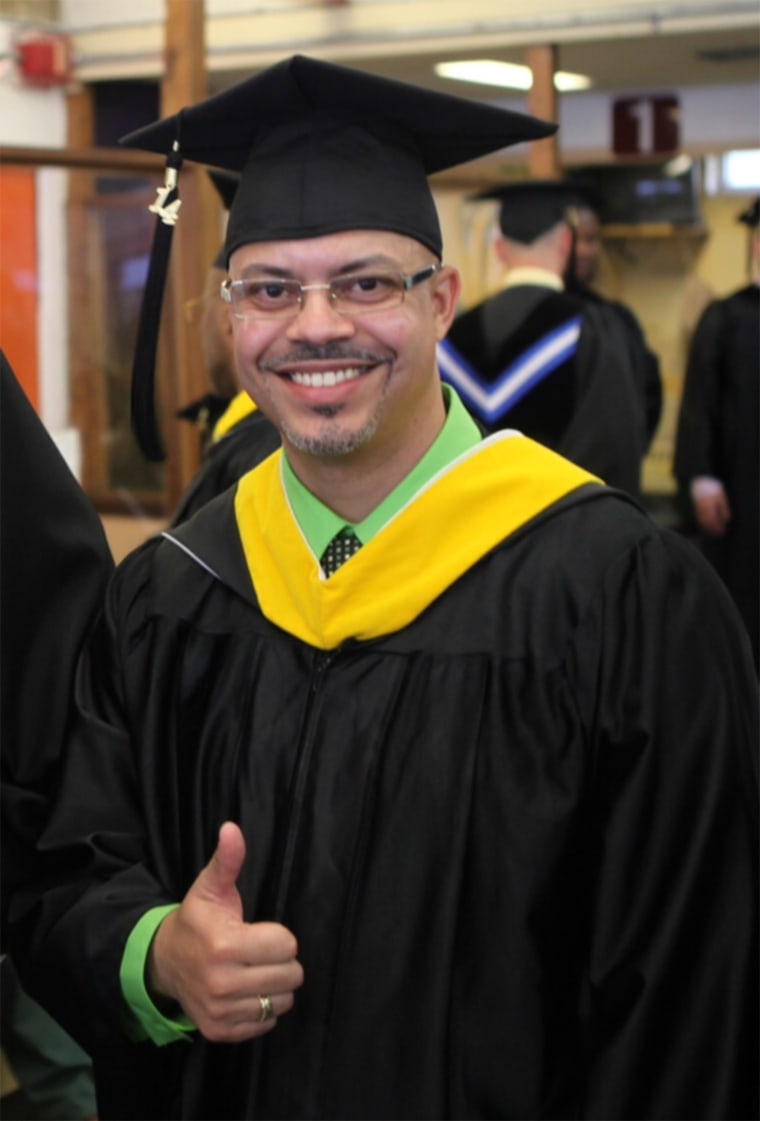The two letters were dated 12 years apart, to the day -- and they were equally haunting and desperate.
The second was written on December 5, 2014 at 4:34 in the morning.
“I am not ‘simply’ innocent, I am CLEARLY INNOCENT! Everyone knows this,” Jon-Adrian “JJ” Velazquez wrote to me from his cramped cell inside New York’s Sing Sing prison. “I’m writing this letter, suffocating in this tiny cage, bruised and battered by a horrendous decision to overlook such a terrible travesty.”
For years, Velazquez has been begging a court to hear evidence that he says proves his innocence. But earlier that day, he learned that a judge had denied his request. There would be no hearing, no witnesses called.
“The craziest part of it all,” Velazquez wrote, “is that I may have to die before anyone really cares about what is actually happening. People come together and rally hard for the dead, but no one wants to take a stand for the living.”
Velazquez has been behind bars for nearly 17 years, convicted of murder and sentenced to 25 years to life. I first met him in 2002 when he heard about a story I produced for “Dateline” called "In the Shadow of Justice," about the plight of two innocent men who were wrongfully convicted and spent 15 years in prison for a murder at New York City’s Palladium nightclub. Velazquez said, like them, he was innocent.
Click Here to Send Dan Slepian an Email
Having worked at “Dateline” for 18 years, I’ve received many pleas from inmates who declare they are innocent. Most are either lying, can’t back up their claim, or the details are murky.
But Velazquez was different.
He began writing me letters. The first of what would become dozens arrived on December 5, 2002.
“Four years ago, I sat in a courtroom and couldn’t believe what was happening to me. I’d never been convicted of a crime in my life, but here I was being found guilty of a murder I knew nothing about. My family has suffered severely.”
His letters stirred something inside of me. Not only did he appear intelligent, determined and thoughtful, but he said he had the facts to prove his innocence.
So I decided to visit him in prison, and be open to the possibility he was telling the truth.
Within the first minutes of our initial meeting, he challenged me to find him guilty. He wanted me to turn over every stone. He was adamant that he was an innocent man.
I promised him I would take him up on his challenge, but if he lied to me about anything, even once, I wouldn't be coming back. He didn't appear concerned.
So I got to work. Little did I know how long it would take.
Click Here to Watch the Original Dateline Report
Over the course of 10 years, and with the help of other “Dateline” producers, I read thousands of pages of paperwork, found eyewitnesses who didn’t want to be found and interviewed dozens of people.
Here’s what I learned:
Velazquez was convicted for the Jan. 27, 1998 murder of former New York City police officer Albert Ward at the illegal numbers parlor Ward operated in Harlem. According to police reports, about half a dozen people, nearly all alleged drug users or dealers, were inside the gambling parlor when two men came in and announced a robbery.
Witnesses told police that one of the men had a gun; the other started binding people with duct tape. A struggle ensued and Ward, the ex-cop, was shot once in the head.
Within hours of the murder, according to police reports, most of the witnesses gave police similar descriptions of the gunman as “a light-skinned black male” with “dreadlocks” or “cornrows,” and a sketch of the suspect was plastered all over Harlem. Police files show that at least three different tips soon came in about a man named “Mustafa,” who tipsters said was a drug dealer with dreadlocks who fit the description of the shooter. According to NYPD reports, “Mustafa” was initially their “prime suspect.”

While carrying out a citywide search for “Mustafa,” reports show that police also sought two eyewitnesses who fled the scene: a drug dealer named Augustus Brown and a heroin addict named Lorenzo Woodford. They found Woodford first, who described the shooter as a “black male” with “cornrows.” Woodford then led cops to Brown, his dealer.
At the precinct, Brown told detectives the shooter was “a light-skinned black male” with “jet black curly hair.” Then, police reports show, Brown looked at more than 1,800 photographs over nearly eight hours before saying, “That’s the guy, but his eyes look different in the picture.”
Police immediately began searching for the man whose photo was picked by Brown: Jon-Adrian Velazquez, then 22, a Latino who had never worn his hair in dreadlocks. That’s when the active search for the previous suspect, “Mustafa,” ended.
Months earlier, Velazquez had been arrested for drug possession, according to records – and while he was never convicted of that or any other crime, police still had his mug shot in their files.
When Velazquez heard police were looking for him, he turned himself in, saying he had no knowledge of the crime, and volunteered to appear in a line-up, police records show. There was no physical or forensic evidence linking him to the shooting.
In addition to Brown, two other witnesses -- brothers with criminal and drug histories -- picked Velazquez out, and he was arrested for murder. Woodford, the addict who ran from the scene, initially identified another man, but later said the gunman might have been Velazquez.
At his trial, Velazquez, his mother and then-girlfriend all testified he was at home in the Bronx and on the phone with his mother during the robbery, and produced phone records to prove it. But the jury didn’t buy it. The judge barred any mention of "Mustafa." Based solely on eyewitness testimony, Velazquez was convicted.
In 2012, “Dateline” aired “Conviction,” the results of our investigation. Among the revelations in our broadcast: Augustus Brown, the eyewitness who first identified Velazquez, said he picked a suspect at random because police had threatened to charge HIM. Brown also said he had 10 bags of heroin on him when police picked him up -- and he believes they knew it. Only after he identified Velazquez, said Brown, did police let him leave the precinct. He said he walked out with the drugs and police allowed him to take them with him.
A second witness who had identified Velazquez also recanted during the broadcast, saying, “I told police that this was the guy and I was sure, but this was not the truth. … I felt pressured because the police were threatening to arrest me.” (He later withdrew his recantation, however.)
In addition, shortly after the “Dateline” broadcast, two people came forward to say a man named “Mustafa,” a black man with dreadlocks, had confessed to them that he was the gunman and that “someone else was doing his time.”
Related
- A Reporter's 10-Year Quest for Answers in a Murder Case
- Manhattan Keeps High-Profile Murder Conviction Intact After Review
- Court Asked to Toss New York Murder Conviction After DA Won't
The Manhattan District Attorney’s office said it took those leads seriously and thoroughly investigated them, and “did not uncover evidence sufficient to demonstrate that Mr. Velazquez is innocent.” In an April 2013 letter to Velazquez’s attorney, the DA ultimately concluded that “Mustafa” “was not involved in the murder of Albert Ward.” Further, since two other eyewitnesses stood by their identifications of Velazquez, “…from a legal standpoint,” the letter said, “The verdict should stand.”
Earlier this month, Judge Abraham Clott agreed with the prosecution, and denied Velazquez’s request for a hearing.

During his incarceration, JJ Velazquez has been a model inmate. He lives in honor block, he has earned a college degree, and is the spokesperson for the inmate population to the prison’s administration.
Most of all, though, he’s still fighting for his freedom.
“I have been dragged through the gates of hell with no solid grounds for keeping me hostage,” he wrote in his most recent letter. “Do I have to jump off a prison tier with a noose around my neck to get people to realize that wrongful convictions are a slow death? What will it take?”
